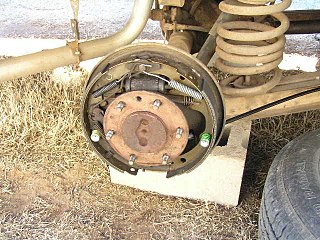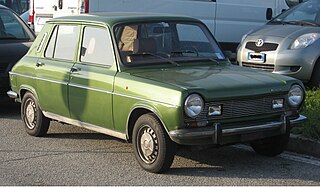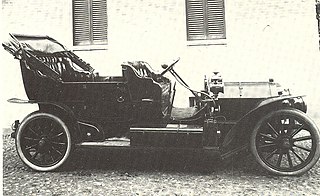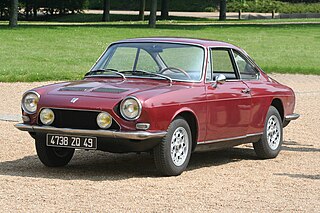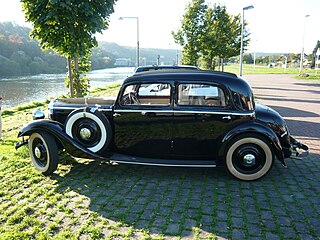This article needs additional citations for verification .(December 2009) (Learn how and when to remove this template message) |
| Fiat 518 | |
|---|---|
Fiat 518 C saloon | |
| Overview | |
| Manufacturer | Fiat |
| Also called | Fiat Ardita |
| Production | 1933–1938 |
| Body and chassis | |
| Body style |
|
| Layout | Front-engine, rear-wheel-drive |
| Related | Fiat 527 (Ardita 2500) |
| Powertrain | |
| Engine | 1,758 cc I4 (Ardita) 1,944 cc I4 (Ardita 2000 and Sport) |
| Transmission | 4-speed manual |
| Dimensions | |
| Wheelbase | 2,700 mm (106.3 in) (518 C) 3,000 mm (118.1 in) (518 L) |
| Length | 4,035 mm (158.9 in) (518 C saloon) 4,335 mm (170.7 in) (518 L saloon) |
| Kerb weight | 1,185–1,259 kg (2,612–2,776 lb) (518 C and 518 L saloons) |
| Chronology | |
| Predecessor | Fiat 514 |
| Successor | Fiat 1500 |
The Fiat 518, also called Fiat Ardita, was a model of car produced by Italian car manufacturer Fiat between 1933 and 1938. The name "Ardita" was also used on the six-cylinder engined and more expensive Fiat Ardita 2500 or 527.

Italy, officially the Italian Republic, is a country in Southern Europe. Located in the middle of the Mediterranean Sea, Italy shares open land borders with France, Switzerland, Austria, Slovenia and the enclaved microstates San Marino and Vatican City. Italy covers an area of 301,340 km2 (116,350 sq mi) and has a largely temperate seasonal and Mediterranean climate. With around 61 million inhabitants, it is the fourth-most populous EU member state and the most populous country in Southern Europe.

Fiat Automobiles S.p.A. is an Italian automobile manufacturer, a subsidiary of FCA Italy S.p.A., which is part of Fiat Chrysler Automobiles. Fiat Automobiles was formed in January 2007 when Fiat reorganized its automobile business, and traces its history back to 1899 when the first Fiat automobile, the Fiat 4 HP, was produced.
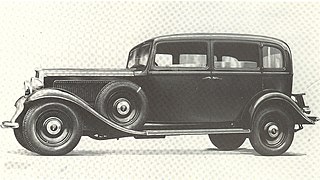
The Fiat 527 is a six-cylinder passenger car produced by Fiat between 1934 and 1936. The 527 was a larger-engined and more luxurious version of the four-cylinder 518 Ardita. This car was built only with a full-length chassis, having a wheelbase of 3,170 mm (124.8 in).
Contents
- Models
- Ardita and Ardita 2000
- Ardita Coloniale
- Ardita Sport
- Production outside Italy
- Simca-Fiat
- In Poland
- References
- Notes
- Bibliography
In total 8.794 518swere produced by Fiat. Additionally the 518 was produced outside Italy: in France by Simca as Simca-Fiat 11 CV, and in Poland by Polski Fiat as well as by PZInż under licence.
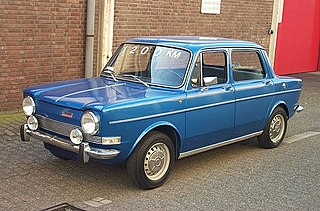
Simca was a French automaker, founded in November 1934 by Fiat and directed from July 1935 to May 1963 by Italian Henri Théodore Pigozzi. Simca was affiliated with Fiat and, after Simca bought Ford's French activities, became increasingly controlled by the Chrysler Group. In 1970, Simca became a subsidiary and brand of Chrysler Europe, ending its period as an independent company. Simca disappeared in 1978, when Chrysler divested its European operations to another French automaker, PSA Peugeot Citroën. PSA replaced the Simca brand with Talbot after a short period when some models were badged as Simca-Talbots.

Polski Fiat was a Polish car brand. Under this brand, cars under licence of the Italian manufacturer FIAT were manufactured or assembled in Poland.

The Państwowe Zakłady Inżynierii was a Polish pre-World War II arms industry holding and the main Polish manufacturer of vehicles, both military and civilian.



